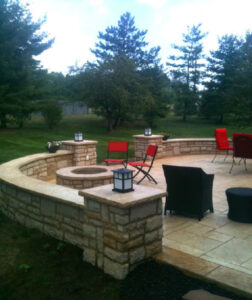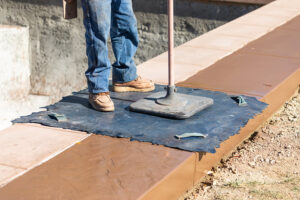Concrete is a durable construction material for making roads, sidewalks, buildings, and bridges. Concrete Colorado Springs is made by mixing cement and aggregates such as sand, pebbles, gravel, or shale with water. The mixture is placed in a formwork before it hardens. Chemical admixtures can be added to make concrete more flowable, set faster, or change its color or appearance.
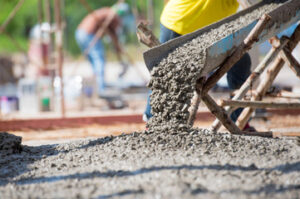 Concrete is a building material that has many different strengths. Its strength is measured in pounds per square inch (psi). There are three types of strength: compressive, tensile and flexural. The strength of concrete depends on a number of factors, including the quality of the materials used and how they are mixed, placed, cured and reinforced. The right strength of concrete is important for any building project. A higher PSI rating means the concrete will be stronger and more durable but can also cost more. To save money, consider using a lower PSI concrete mixture.
Concrete is a building material that has many different strengths. Its strength is measured in pounds per square inch (psi). There are three types of strength: compressive, tensile and flexural. The strength of concrete depends on a number of factors, including the quality of the materials used and how they are mixed, placed, cured and reinforced. The right strength of concrete is important for any building project. A higher PSI rating means the concrete will be stronger and more durable but can also cost more. To save money, consider using a lower PSI concrete mixture.
The strength of concrete is determined by its ability to resist the pressure of a concentrated load. The most common method of testing concrete strength is by using a field-cured cylinder test. This is the most accurate way to determine a concrete’s strength because it is done in a controlled environment. The results of this test are precise and can be verified by a third party. This is the best way to know if your concrete is strong enough for your construction project.
In addition to the cylinder test, a split tensile strength test can also be used to measure the tensile strength of concrete. The tensile strength of concrete is about 10% of the compressive strength. In general, the tensile strength of concrete increases with the water-to-cement ratio.
To get the maximum strength out of a concrete mix, a water-to-cement ratio of 0.5 is recommended. This will ensure that the water is thoroughly incorporated into the cement and that all of the aggregate particles are hydrated. It is also important to ensure that the aggregates are properly sized. Too large an aggregate will make the concrete hard to work with, while too small an aggregate may not be strong enough for a particular application.
Durability
Concrete is a durable building material that resists weathering action, chemical attack and abrasion. It is also designed to retain its original engineering properties and function in a wide range of service conditions. This durability can be achieved through proper design, materials selection, mixing, placement and curing practices. Concrete can also be made durable by replacing aggregates with recycled material, by using low-sulphate cement and by modifying the water-cement ratio. This way, the concrete can be recast into its original form without losing any of its tensile strength.
The durability of concrete is a complex topic and depends on the environment in which it is used. Durability can be separated into two primary factors – the concrete system and the service environment. Several factors can affect the durability of concrete, including:
Among these factors, the most important is permeability, which is defined as the ability of water to pass through concrete under normal conditions. The permeability of concrete is related to its porosity, which is determined by the amount of water in the mix, the size and distribution of the aggregates, and the pore size and interfacial transition zone of the concrete.
Another factor is the workability of the concrete, which can be measured with the slump test. The test measures the plasticity of a fresh batch of concrete, and is usually carried out by filling an Abrams cone with a sample from a concrete mix and then tamping it. The size of the slump varies with the type of concrete and the water-cement ratio, and can be used as an indicator of the quality of the concrete.
The earliest forms of concrete, such as those used in the Roman aqueducts, were super-durable, and scientists have spent decades trying to understand the secret of this ancient construction material. The latest research has found that the key was in the use of quicklime rather than slaked lime in the mixing. This resulted in a more crystalline structure and lower permeability. It also produced a higher tensile strength. The findings could have significant implications for concrete production, since the more crystalline the concrete is, the stronger and more durable it will be.
Recyclability
Concrete recycling is a way of disposing of old concrete structures without damaging the environment. It is becoming more common because of improved environmental awareness and governmental laws. Concrete recycling is a valuable alternative to landfill disposal, which can be expensive and create pollution. Concrete can be recycled for many different purposes, including road base and landscaping.
The process of recycling concrete involves crushing the structure and grinding it into a fine aggregate. It is then used in new construction projects. This type of recycling saves money and energy that would be needed to extract and transport raw materials. It also helps to reduce the amount of waste that is generated during construction.
Recycling concrete requires industrial-grade crushers with large jaws and impactors. The crushed concrete is then screened to remove dirt and other unwanted material. It is also run through a magnet to remove steel and water flotation to separate other metals. It is then used to form hardcore sub-bases, gravel for driveways and roads, or as a component in new concrete.
Concrete is one of the most widely used building materials in the world. Approximately 140 million tons of it is used in the United States each year. This is because it is durable, affordable and long-lasting. It can withstand high loads, extreme temperatures and weather conditions. It can even be molded into unique shapes.
Besides concrete, there are a variety of other types of construction material that can be recycled. Some of them include masonry, asphalt and plastic. In addition, they can be made from recycled aggregates, which help to minimize environmental impacts.
Many industrial wastes can be used in place of cement or aggregate in concrete production. These include fly ash, ground granulated blast-furnaces slag (GGBFS), waste glass and ground vehicle tires. These materials can improve workability, durability and strength of concrete. They also lower the water and cement consumption and sequester carbon dioxide in the atmosphere.
Adding fly ash or GGBFS to concrete lowers its permeability and increases its durability. It can be used to replace up to 30 percent of the fine aggregates and up to 20 percent of the cement. It can also be used in conjunction with chemical admixtures, such as plasticizers and superplasticizers, without changing the water-cement ratio.
Cost
Concrete is one of the most versatile and durable materials available for construction. It is created by mixing binding material, aggregate (sand, gravel, crushed stone or recycled concrete), water and admixtures into a rock-like mass that hardens upon placement due to a chemical process called hydration. The proportions of each component are determined by their individual properties. Once mixed, the concrete is transported to its final destination where it will be poured, cast, or used in other applications. Concrete can be hand applied, pumped, sprayed, and grouted for advanced applications.
Concrete structures are long-lasting and require little maintenance. They are also cost-effective to build and more energy efficient than traditional buildings. In addition, they can resist natural disasters such as earthquakes and hurricanes. Concrete can even be used to construct bridges, as it is highly stress-resistant and can support heavy loads. In the world of commercial buildings, concrete is often used to build foundations and slabs, as well as columns and beams. It can also be used to build walls and floors in a building. The use of insulating concrete can help reduce energy consumption by keeping heat inside and reducing energy costs.
Unlike wood and steel, concrete can be formed into different shapes and sizes to create unique designs. This versatility makes it a perfect choice for building projects that have specific requirements, such as curves and corners. Concrete can also be colored with pigments to give it a more appealing look.
When building with concrete, it is important to understand that the materials must be thoroughly mixed and molded in order to achieve proper strength and durability. This can be done at a concrete plant or on the job site using large industrial machinery. It is also important to keep in mind that the concrete must be mixed, molded, and placed within a specific time frame. Any disruptions can have a negative impact on the quality of the concrete.
Concrete is a common material for roads and highways, as it is durable and cost-effective to produce. It can withstand the constant traffic of trucks and cars without cracking or sinking. In addition, concrete is not susceptible to rutting or spring-thaw load restrictions. It is also environmentally friendly, as it does not emit any harmful gases and helps to clean the air.
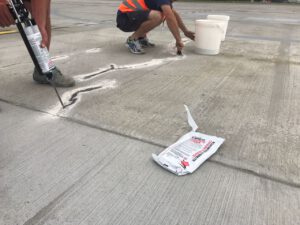
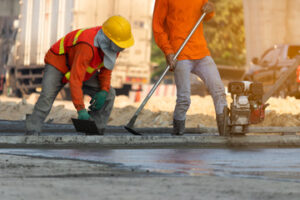 Installing a concrete driveway is a challenging job. Even though concrete is easy to work with on a small scale, installing a concrete driveway is a big task and requires careful planning and preparation. It is best to hire a professional c
Installing a concrete driveway is a challenging job. Even though concrete is easy to work with on a small scale, installing a concrete driveway is a big task and requires careful planning and preparation. It is best to hire a professional c
